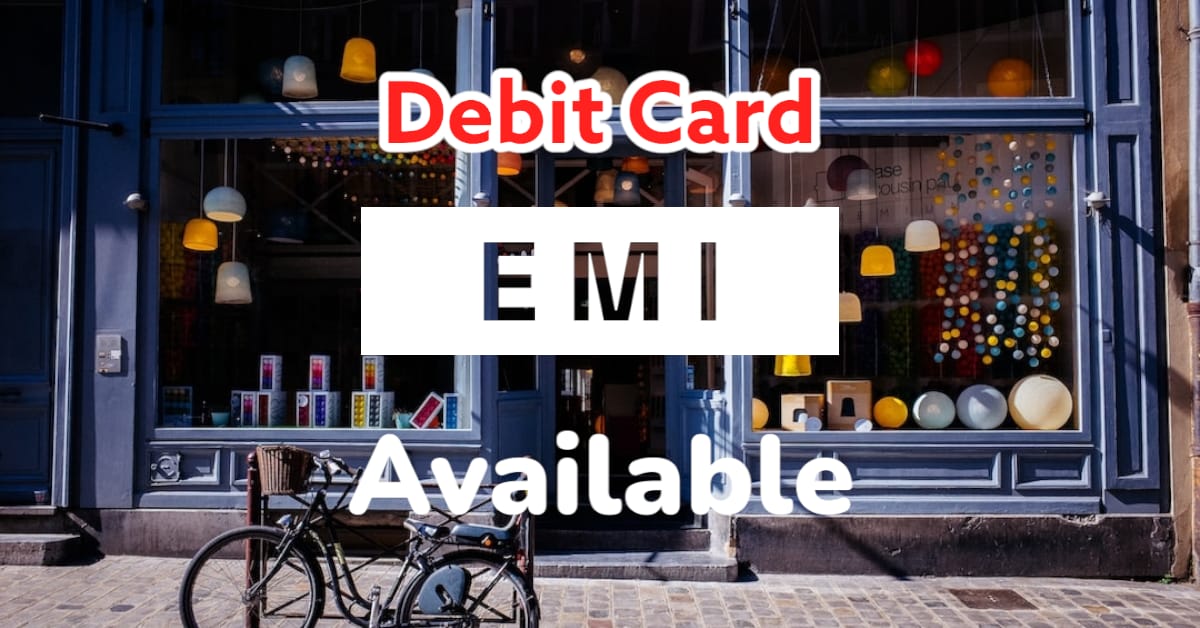Stop looking for friends who can lend you their Credit card to buy Mobile or TV on EMI.
Your bank account can empower you to buy on EMI. Debit card EMI, the new hero in town.
Today we will talk about How to avail Debit Card EMI, which is a payment option that can make your high-value purchases more affordable and easier to pay. Instead of paying the entire amount upfront, you can convert your purchase into smaller monthly installments.
Here are the steps to avail Debit Card EMI:
Step 1: Check eligibility – Check with your bank whether your debit card and transaction are eligible for EMI, as not all cards and transactions qualify for this option.
Step 2: Select EMI option – If your debit card is eligible, you can select the EMI option at the time of the transaction, online or offline, depending on the merchant.
Step 3: Choose the EMI tenure – You can choose the EMI tenure ranging from 3 to 24 months, and the interest rate will apply accordingly. Keep in mind that the interest rate can vary from bank to bank and may range from 12% to 24% per annum.
Step 4: Check additional charges – Some banks may charge a processing fee for availing the EMI option, in addition to the interest rate. These charges will differ from bank to bank.
Step 5: Debit Card EMI Payment – The EMI amount will be automatically deducted from your account linked to the respective debit card on a monthly basis until the entire amount is paid off. The EMI amount will be deducted from your debit card’s credit limit, and you won’t be able to use that portion of your credit limit until the EMI is fully paid off.
Remember, the Debit EMI option is a form of credit, and you must ensure that you have the financial means to repay the EMI before opting for it. It’s essential to read and comprehend the terms and conditions of the EMI before availing it.
Debit Card EMI vs Credit Card EMI
Debit Card EMI and Credit Card EMI are two distinct financing options that allow consumers to purchase products and services and pay for them in instalments. Nevertheless, there are a few significant differences between the two.
Issuance – Debit cards are linked to an individual’s savings account, while credit cards are issued by a bank or financial institution and the credit limit is based on the person’s creditworthiness.
Credit Score – Secondly, while individuals must have a good credit score to qualify for Credit Card EMI, they can obtain Debit Card EMI without any credit score requirements.
Interest Rate – Credit Card EMIs generally have a higher interest rate than Debit Card EMIs, since credit cards are unsecured loans, while debit card EMI is supported by the funds available in the individual’s savings account.
Minimum Order Value – For Credit Card EMIs the minimum eligibility threshold amount is lower mostly INR 3000 and above than Debit Card EMI for which eligibility is INR 5000 and above.
Product and Service Category – Finally, Debit Card EMIs are generally available only for selected purchases and certain banks, while Credit Card EMIs are offered for a wider range of purchases and banks.
While Credit Card EMIs require a good credit score and have higher interest rates and processing fees, Debit Card EMIs may or may not have a processing fee, have a more flexible payment schedule, and are available to a more limited extent.
Debit Card EMI is an excellent payment option for people who want to make high-value purchases more affordable and easier to pay. By following the steps we have discussed and keeping in mind the important things to remember, you can use this payment option to your advantage.









